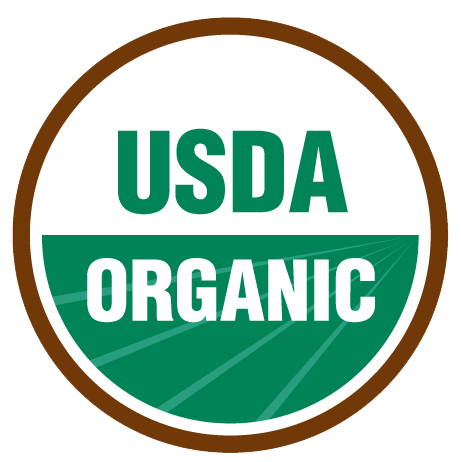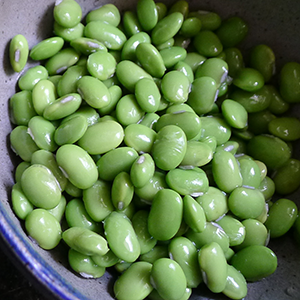
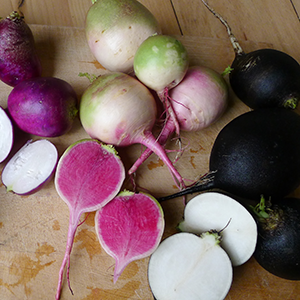
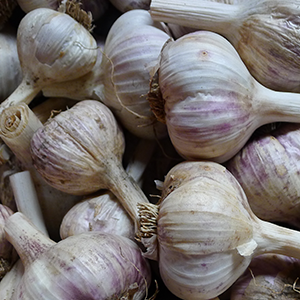
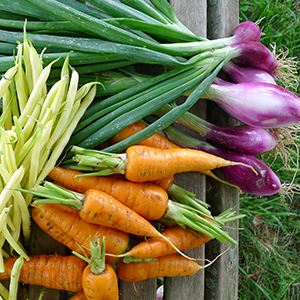
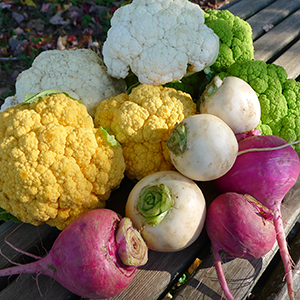
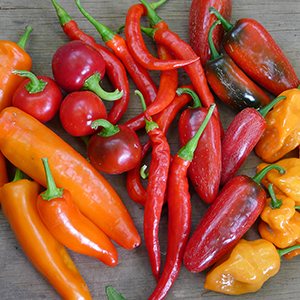



News and Notes | The Anchor Run Blog
Posts Filtered by Month - September 2016 |
Show Recent Posts
September 25, 2016
A Green Time
By Derek McGeehan
A Green Time
By Derek McGeehan
Harvest #20 (Week B) should include lettuce, kale, cabbage, broccoli, garlic, butternut, spinach, chard, arugula, mizuna, beets, kohlrabi, eggplant, sweet peppers, hot peppers, tomatoes, green tomatoes, leeks, and potatoes. Some items will be a choice and may not be available during all pick up times. U-pick should include cherry tomatoes, dill, cilantro, parsley, herbal basil, and perennial herbs.
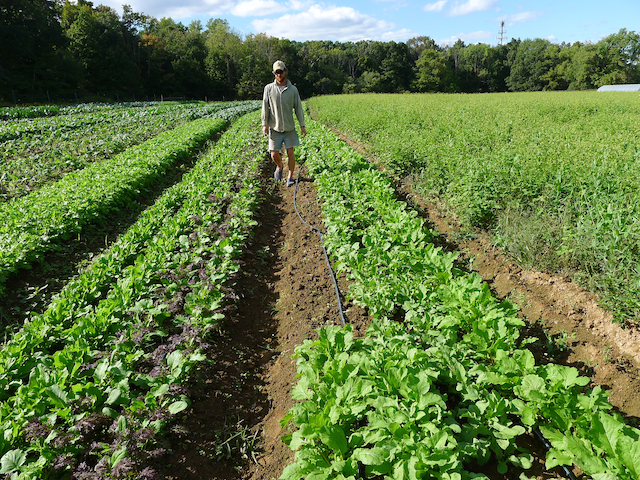
Seeded less than a month ago, these greens grew extremely quickly thanks to a very warm September, irrigation, and one or two rainstorms. The preceding 3-year fallow period may also have given the crops a special dose of soil biology. On the right side is a cover crop of buckwheat, peas, and red clover.

September 25, 2016
Sign Up For 2016 Late Fall and 2017 Winter CSAs
By Derek McGeehan
Sign Up For 2016 Late Fall and 2017 Winter CSAs
By Derek McGeehan
Sign up now on the members' page to secure your spot in our 2016 Late Fall CSA and 2017 Winter CSA! For additional information please see the bulletin that was e-mailed to you this past week, log into the website and click the green "Join" buttons on the members' page, or look below.
2016 Late Fall CSA:
- 6 weeks of fresh and storage crops from weeks 11/13/16 through 12/18/16
- vegetables should include greens like arugula, spinach, mizuna, kale, collards, cabbage, napa cabbage, endive, escarole, lettuce, chard, and beet greens; roots like turnips, beets, radishes, potatoes, sweet potatoes, and kohlrabi; as well as storage crops like onions, garlic, and butternut; and freshly harvested alliums like chives, leeks, and scallions
- cold hardy vegetables grown outside with use of low hoops and row cover
- weekly full shares ($180) and biweekly half shares ($100) available
- share distribution on Wednesdays 1-8pm (except for Tuesday 11/22/16)
2017 Winter CSA:
- 8 weeks of fresh and storage crops from weeks 1/1/17 through 2/19/17
- vegetables should include greens like arugula, spinach, mizuna, kale, collards, cabbage, napa cabbage, lettuce mix, chard, and beet greens; roots like turnips, beets, radishes, potatoes, sweet potatoes, and kohlrabi; as well as storage crops like onions, garlic, and butternut; and freshly harvested alliums like chives, leeks, and scallions
- cold hardy vegetables grown inside of hoop house, high tunnel, and greenhouse
- weekly full shares ($240) and biweekly half shares ($130) available
- share distribution on Wednesdays 1-8pm
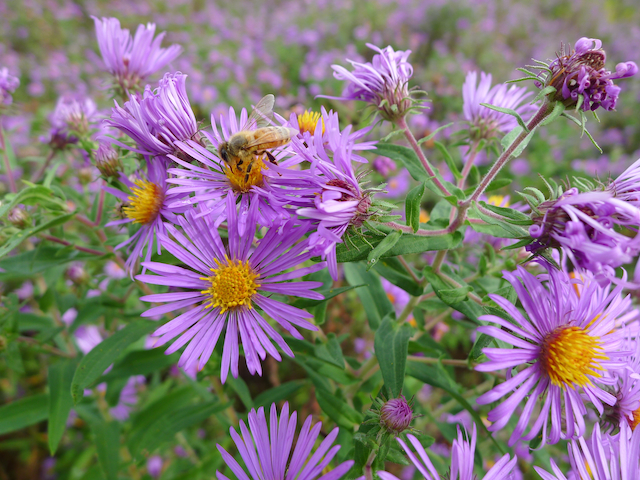
New England asters are blooming prolifically around the farm this time of year, satisfying many insects' late season nectar needs, such as monarch butterflies before their journey south, as well as this honeybee.

September 25, 2016
Truly Autumn
By Derek McGeehan
Truly Autumn
By Derek McGeehan
Lows last night bottomed out in the upper 40s and highs this weekend will stay in the mid-70s. In fact I don't see temperatures reaching the 80s in the 10-day forecast. This surely sounds like autumn to me. Fall crops such as greens in the brassica and amaranth families are really beginning to beg for harvest and will be seen in the pick up room this week. After mostly being absent for the past few weeks due to erratic germination and a lack of love for heat, lettuce finally appears to have made a continued return into the foreseeable future. Broccoli, cabbage, and kale are thriving, even with the bug pressure. So many crops on the farm appear to be in perfect states of pick-ability that it will be difficult to choose which ones go in the share and which ones we should hold. Most likely storage crops already out of the field and protected in the barn will be the ones we hold on to until the fresh greens slow down or we catch up. I don't know about you, but I am very much looking forward to a return of these delicate delectable greens.
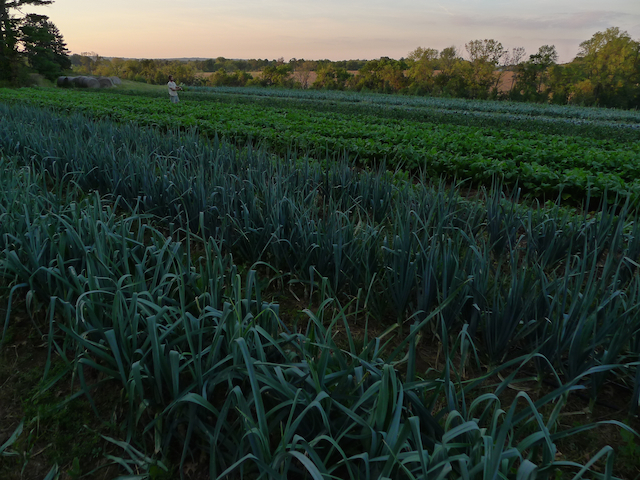
A scene of autumn colors and crops - leeks, radishes, turnips, celeriac, cabbage, broccoli, and cauliflower - with a golden field of desiccated soybeans and a purply-pink skyline.

September 25, 2016
A brief look into what's on the farmers' table
By Derek McGeehan
A brief look into what's on the farmers' table
By Derek McGeehan
As farmers and eaters, we love to incorporate whole and simple food and meals into our diet because we're busy, like you, and have access to good quality ingredients, like you. We hear from members occasionally about their difficulty in using up a full share of produce on a weekly basis. Here, we would like to expose you to simple and easy ways of using your CSA share as we farmers do. To make a quality healthy meal is very easy; you really only need a few items like produce; meat, fish, poultry, eggs, cheese or some other kind of non-animal protein; sea salt; and a fat like coconut oil, olive oil, butter, or lard. As you become more familiar with cooking and using whole, simple ingredients you'll seldom need to follow recipes anymore. It's an enlightening and enriching endeavor. Eventually you may think most meals can be almost as good as Thanksgiving's main celebratory meal (as I like to think).
A quick and easy, extremely tasty, and incredibly healthy dinner meal:
- 3 chopped savoy cabbages, 3 chopped bunches of chives, a tablespoon or so of sea salt, and a few tablespoons of coconut oil - roasted in a large pan at 400 degrees for an hour
- A couple pounds of potatoes sliced into thin wedges, mixed with sea salt and some Ledamete lard, roasted on a cookie sheet at 400 degrees for an hour, with above dish
- 3 Ledamete sausages cooked at 400 degrees for 40 minutes, with above dishes
Breakfast, about every day of the week:
- Blend some kind of green like kale, some fruit, and mix with homemade kefir (which is made from Birchwood Dairy raw milk). A typical smoothie divided between Dana, Gabe, and me can include about 2 bunches of kale. Besides being an extremely efficient way to use up your greens, a smoothie like this is a meal and medicine in one and creates an overall sense of wellbeing.

September 25, 2016
Greens and Green Tomatoes
By Linda Dansbury
Greens and Green Tomatoes
By Linda Dansbury
The warm temperatures have the greens in the field growing rapidly and begging to be harvested, so there will be a volume of greens that we haven't seen since the spring harvest. Greens are easy to incorporate into a lot of recipes - add to casseroles, stir fries, lasagna, pasta mixtures, sautes, and of course soups, stews and smoothies. Even many of the "stronger" greens can be made into or bits can be added to salads. Please search this website for a lot of ideas - just put the word "greens" into the search bar. The recipes have been adapted to fit the farm's harvests - that is, many of the recipes will list several greens that can be used whereas if you search the internet most of the recipes specify a green or 2.
As for green tomatoes, you can do a couple of things with them. You can let them ripen - when I was a kid, we used to pick the green tomatoes from the plants right before frost, wrapped each one in newspaper, and then left them alone. Once per week we would unwrap all of them and check to see how they were progressing.
We also have a few recipes on this site - Green Tomato Sauce over Fettuccini, Green Tomato Relish and probably the best known way to use them - Sauteed Shrimp in Remoulade Sauce with Fried Green Tomatoes.
If you have some ideas on how to use your harvest, please email me at lindadansbury@comcast.net

September 25, 2016
Cooling temps
By Linda Dansbury
Cooling temps
By Linda Dansbury
We are finally seeing true fall weather - yay! Time to pull out the stew and soup pots and roasting trays. Dana and Derek posted some of what they do for simple dinners this week - proving again that it takes very little effort to get a meal of delicious, nutritious food on the table.
This past week, I had intended to make the Fall Stew, but I ran out of time, so hope to do it today. I did make use of some of our veggies in yummy ways. If you have ideas to share, please email me at lindadansbury@comcast.net and please put Anchor Run in the subject line so I can find your email.
Peppers, onion, garlic, Swiss chard, basil - made stuffed peppers - I stuffed them with a veggie/grain mixture of quinoa cooked in vegetable stock with cumin added. When cooked, added chopped Swiss chard, sauteed onion and garlic, raisins, feta. Baked them for about 45 minutes (the recipe called for an hour, but I had used a lot of smaller peppers so cooked them less so they didn't fall apart). Made a sauce of yogurt, basil, garlic and lemon to top the baked peppers - delicious. The "sauce" was especially delicious and would make a great salad dressing or dip.
Onion, kale, garlic, tomatoes - made a sort of lasagna meets casserole with sausage from Ledamete. Sauteed the sausage and when browned, removed it to drain and added onion and garlic and let that go for a few minutes. Added enough finely chopped tomatoes to equal what a 28 ounce can would be and let cook till thickened. Separately put together the cheese mix - ricotta, mozz, and parmesan. Added an entire bunch of chopped kale and probably could have added more greens than that. Cooked the pasta and then mixed all together in the pot in which the pasta was cooked. Spread into a lasagna pan and baked at 375 for about 45 min. It was tasty.
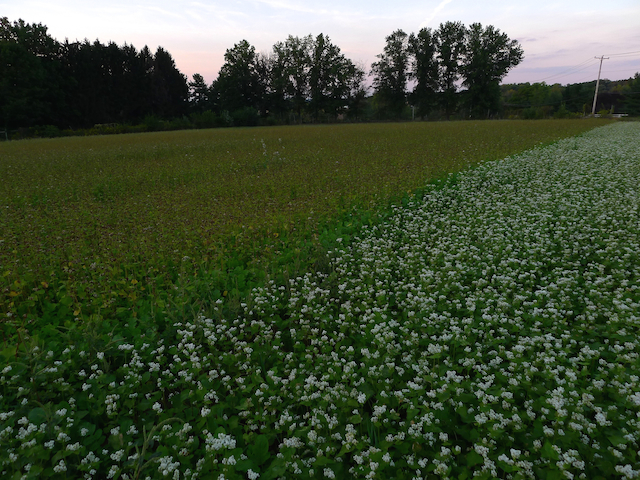
Two established patches of buckwheat and daikon radish cover crops sown about a month apart. The buckwheat on the left is beginning to decline allowing the daikon radish to fully grow and take over whereas the buckwheat on the right is in full flowering stage and will eventually decline as well.

September 18, 2016
Fall crops begin
By Linda Dansbury
Fall crops begin
By Linda Dansbury
Crops are beginning to change - you have seen this by the kale and Swiss chard in the pick up room the past couple of weeks. Salad radishes, salad turnips, and beets will be a part of our shares off and on over the next month. Lettuce also returned.
The obvious thing is to either just eat the radishes and turnips out of hand or slice and put them into salads. They are also delicious when eaten with a very simple dip. I tried this in the spring and look forward to having it again. I have posted it to the site - Radishes with Goat Cheese Dip. It is delicious with all sorts of other veggies too - and healthier than most store purchased dips. Check out this site for delicious cooked salad turnip recipes.
Summer veggies allow us to make robust and delicious salads. Slice sweet peppers, scallions, radishes and carrots, chop tomatoes and mix a simple vinaigrette. The salad is crunchy, nutritious and delicious and it has enough flavor that to make it a meal, you can add canned tuna or other flaky fish, leftover cooked chicken and even thinly slice steak and top the salad with it for a lean and tasty dinner.

September 18, 2016
Approaching Autumn
By Derek McGeehan
Approaching Autumn
By Derek McGeehan
Harvest #19 (Week A) should include broccoli, cabbage, potatoes, tomatoes, butternut, kale, lettuce, garlic, onions, leeks, chard, turnips, radishes, beets, okra, hot peppers, sweet peppers, eggplant, and chives. Some items may be a choice and may not be available during all pick up times. U-pick should include cherry tomatoes and herbs.
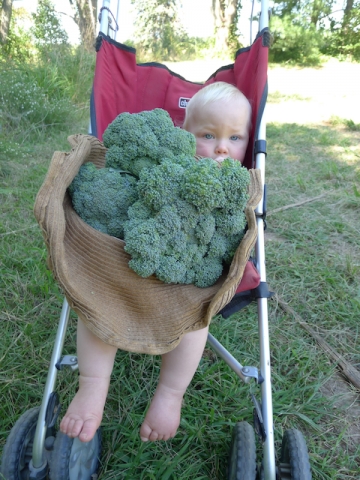
This year's broccoli haul will probably be less epic than the past couple of seasons due to a rough stretch of weather in July, but we're still hopeful for a few good weeks of broccoli harvest. Also, the crop is under attack from a multitude of insect pests including the harlequin bug, cabbage looper, imported cabbageworm, cross-striped cabbageworm, and flea beetles. Soaking your broccoli in salty water will help remove the creatures prior to cooking.

September 18, 2016
Certified Organic
By Derek McGeehan
Certified Organic
By Derek McGeehan
We took the plunge and it's now official: we're Certified Organic. After a lengthy application, solid record keeping, a thorough onsite inspection, as well as using organic practices since the inception of the CSA 13 years ago, Anchor Run is certifiably organically growing produce. We're happy to have the outside approval, though our true certifiers all these years have been our CSA members who pick up at and work on the farm with us, and continue to trust our growing practices. Thank you for your support!
Some big outside jobs in the field from last week were prepping for and sowing cover crops in anticipation of tonight's potential rain event as well as the removal of all of the plastic and landscape fabric from the winter squash patch. We transplanted another round of spinach, the first round of winter scallions, and some bok choy. Winter carrots and another round of arugula, kale, and mustard greens were direct seeded. This coming week we'll begin preparing the hoop house and greenhouse for winter growing, as well as go dancing in the rain.
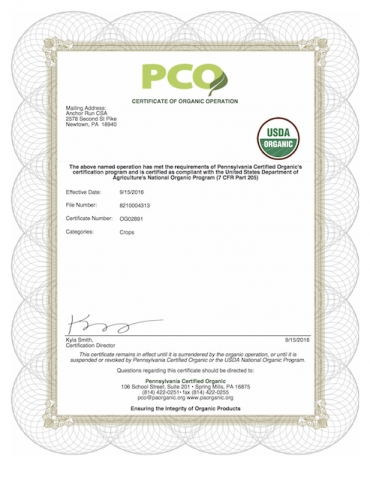
After farming "organically" at Anchor Run for the past 8 seasons, we took the next step to become officially recognized as Certified Organic and were approved last week. The CSA was managed "organically" for the 5 seasons prior to our arrival as well, so after 13 total seasons it's now official.

September 18, 2016
Fermentation Workshop 9/25 1-3pm
Gia Yaccarino
Fermentation Workshop 9/25 1-3pm
Gia Yaccarino
Fermentation Member Share Workshop Sunday, September 25, 2016 1 – 3 PM
Please join us on Sunday, September 25, 2016 for our Fermenting Workshop. Information regarding fermenting resources, websites and books will be discussed. We invite all members from the fermenting pros to the novices to join us for discussion and education on fermenting basics. This year’s fermenting workshop is meant to be focused on the members - sharing their experiences – triumphs and failures, discussing their concerns about the fermenting process and answering questions. Please join us for what promises to be a very engaging workshop!
Additionally, Gia will share some fun fermenting information she just learned while attending the 2016 Farm Aid festival!

September 18, 2016
Sign Up For 2016 Late Fall and 2017 Winter CSAs
By Derek McGeehan
Sign Up For 2016 Late Fall and 2017 Winter CSAs
By Derek McGeehan
Sign up now on the members' page to secure your spot in our 2016 Late Fall CSA and 2017 Winter CSA! For additional information please see the bulletin that was e-mailed to you this past week, log into the website and click the green "Join" buttons on the members' page, or look below.
2016 Late Fall CSA:
- 6 weeks of fresh and storage crops from weeks 11/13/16 through 12/18/16
- weekly full shares ($180) and biweekly half shares ($100) available
- share distribution on Wednesdays 1-8pm (except for Tuesday 11/22/16)
2017 Winter CSA:
- 8 weeks of fresh and storage crops from weeks 1/1/17 through 2/19/17
- weekly full shares ($240) and biweekly half shares ($130) available
- share distribution on Wednesdays 1-8pm
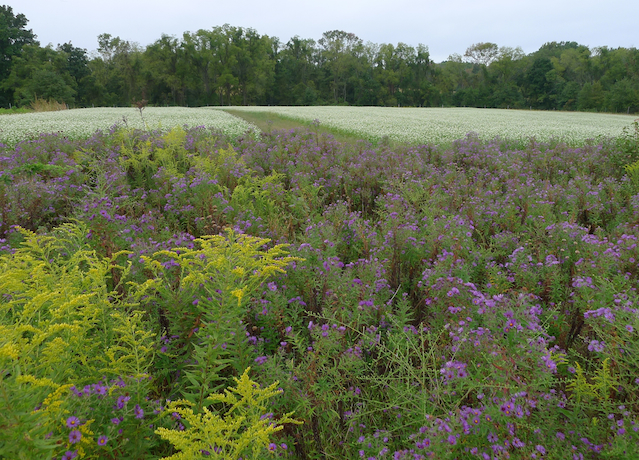
In the foreground are blooming aster and goldenrod, part of our 2-acre pollinator habitat. In the background are a couple acres of flowering buckwheat, hopefully providing good nectar for good insects.

September 18, 2016
Workshifts Week of 9/18
By Derek McGeehan
Workshifts Week of 9/18
By Derek McGeehan
Now that we're into the middle of September there is about one month left of workshift opportunities for you to satisfy the work component of your CSA share. If you're not planning to work this season, please remit the balance of your share cost soon. Half shares work 4 hours, full shares work 8 hours, over the course of the entire season. To "buy-out" of your work hours at $15/hour, please send a check payable to "Anchor Run CSA" at 2578 2nd Street Pike, Wrightstown, PA 18940. Please don't feel guilty about this option!
Shifts this week:
Tuesday 8-10am, 10am-12noon
Wednesday 8-10am, 10am-12noon, 6-8pm (garlic processing in barn)
Friday 8-10am, 10am-12noon
Saturday 10am-12noon
Workshift sign-up instructions may be found here.
Thank you!

September 18, 2016
Summer, Fall, Which Season is it?
By Linda Dansbury
Summer, Fall, Which Season is it?
By Linda Dansbury
Once again, the weather this past week has been confusing in terms of going back and forth from hot to downright chilly!
Here is a bit of what we ate this past week:
Tomatoes, garlic, onion - Using a combination of Anchor Run and my own tomatoes, I made a pretty nice sized batch of tomato sauce.
Eggplant, peppers, onions - grilled and had alongside hamburgers
Butternut squash, kale, garlic - I wanted to do something other than freezing my "seconds" butternut squash so I found a very simple stir fry recipe that used both the squash and kale - it was very good. It was seasoned with salt, pepper and a little chile powder.
Potatoes - I have a very easy way of roasting potatoes that is also delicious. Simply cut them in half and place the potatoes on a cookie sheet, cut side down - place a little bit of butter under each potato and bake in a 375 degree oven until the potatoes are tender and browned on the cut side - that's it!
How did you enjoy your harvest? Please email me at lindadansbury@comcast.net and put Anchor Run in the subject line so I can find your note.
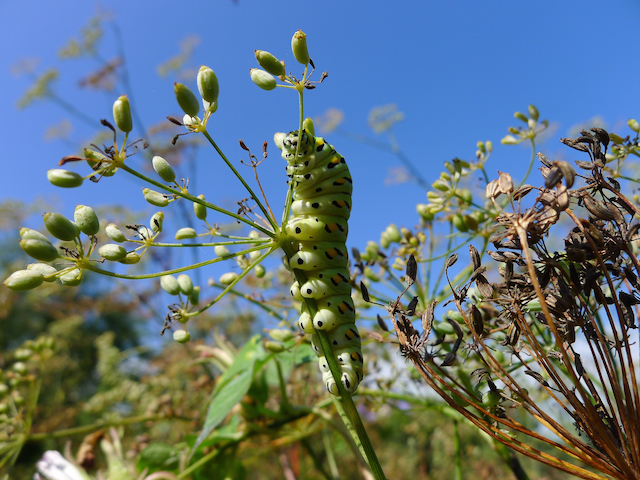
Even though it enjoys eating some of our crops, we tolerate swallowtail caterpillars because they're pretty low in number and don't do too much damage. Plus, they're beautiful in this life stage as well as the flying one. This particular caterpillar munches on some flowering bronze fennel in the herb garden.

September 18, 2016
Fall Stew
By Linda Dansbury
Fall Stew
By Linda Dansbury
Tina Nightlinger sent a recipe for Fall Stew. It is a great way to use a lot of the veggies we are receiving now - it is very healthy too. I am hoping to make a batch of it today. Don't worry if you don't have all of the ingredients - recipes like this are very flexible - add/subtract with whatever you have. Just make sure you add things in the right order based on how long they need to cook.
Thank you to Tina, and please let me know how you are using your harvest at lindadansbury@comcast.net and please put Anchor Run in the subject line so I can easily find your email.

September 11, 2016
Difficult Transition
By Linda Dansbury
Difficult Transition
By Linda Dansbury
Normally by this time of the year, even if we have warm days, the nights start to cool down significantly so that I am excited about cooking "fall-ish" dishes - that is, things that incorporate winter squash, kale, etc. The extreme hot and humid weather is creating difficulties for me in trying to figure out how to best use my harvest - I would love your suggestions, so please email me at lindadansbury@comcast.net.
We also traveled for a few days, but here is some of what we enjoyed:
Swiss chard, garlic - I typically use my chard as a replacement for cooked spinach - I actually prefer it to cooked spinach. Heat olive oil, add some minced garlic and let it go for a few seconds, then add the roughly chopped chard leaves - you can use the stems also, just start with those in the pan and cook until fairly tender - the garlic and leaves go really fast. Cook the chard leaves until just wilted - they will continue cooking for a few minutes after it is removed from the heat. I like to add a squeeze of lemon juice salt and pepper and mix it up - when you plate it, drizzle a bit of olive oil over each serving.
Okra, tomatoes, onion, garlic, hot pepper - made the Charred Okra and Tomato recipe sent in by Derek's mom - check it out in member's suggestion.
Tomato, onion, basil - made a batch of tomato sauce to freeze - didn't have enough to make it worth bringing out the canner and using all that heat to bring it to boiling, so I froze it in containers that will be a good size to have a meal.
Tomatoes, scallions, parsley, chives - Made the Southern Tomato Pie that was featured a few weeks ago. I paired it with a salad for a nice summer meal - it was delicious!
Butternut squash - we had a choice in the pick up room of a bunch of chives or a butternut squash with a blemish that would prevent it from being stored, so I roasted it, scooped out the flesh, placed into a plastic bag and froze it for use later.
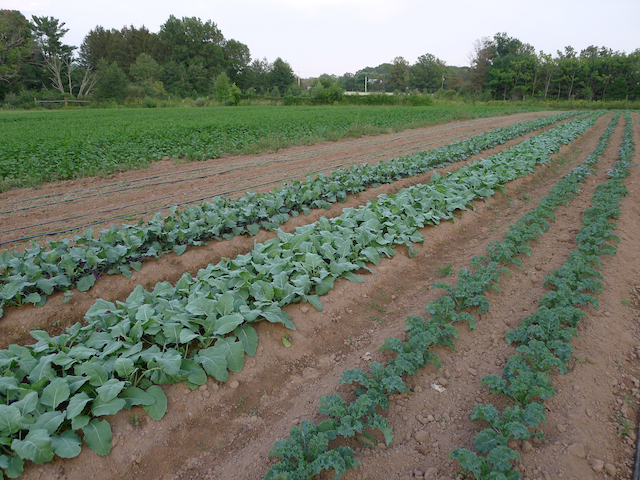
Thanks to drip tape irrigation (which has been temporarily removed to cultivate), lush fall crops of kale and kohlrabi, as well as newly seeded greens, are seen in the foreground with a buckwheat cover crop behind. The color green seems amplified this time of year when young and in their prime crops are healthy compared to perennial plants in other parts of the landscape whose tops and leaves are beginning to senesce as fall and winter approach. Browns and yellows may also be exacerbated this season due to the dry weather.

September 11, 2016
Okra and tomato suggestion
By Linda Dansbury
Okra and tomato suggestion
By Linda Dansbury
In the hectic time of getting the back-to-school schedule re-established, or possibly my same dilemma of how to use the harvest, member ideas have trailed off - if you have any suggestions, please send to me at lindadansbury@comcast.net and include Anchor Run in the subject line.
Derek's mom submitted a recipe for Charred Okra and Tomatoes(or Tomatillos) which I did try and it is delicious - we had it alongside pork carnitas, which was made in the pressure cooker using a pork shoulder roast from Ledemete grass - the okra and tomato combination was a really nice contrast to the richness of the pork dish.

September 11, 2016
Watered Crops
By Derek McGeehan
Watered Crops
By Derek McGeehan
Harvest #18 (Week B) should include butternut winter squash, potatoes, garlic, scallions, onions, kale, chard, lettuce, tomatoes, eggplant, sweet peppers, hot peppers, carrots, okra, chives, leeks, and radishes. Some items will be a choice and may not be available on all pick up days. U-pick should include cherry tomatoes, husk cherries, tomatillos, flowers, and herbs. Unless it rains soon, the majority of u-pick crops will end very soon.
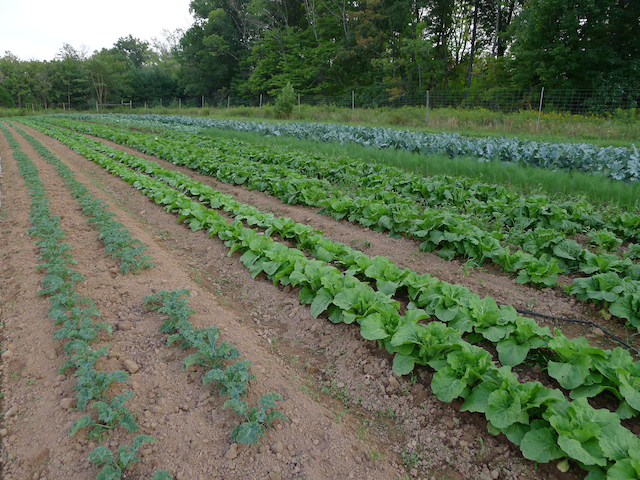
Freshly cultivated and irrigation dependent kale, napa cabbage, fennel, broccoli and other fall crops appreciate the dry weather, as long as we can give them the water they need. In our soils, a little goes a long way. These beds are drip irrigated which has been temporarily removed for cultivation purposes.

September 11, 2016
The Ability to Add Water
By Derek McGeehan
The Ability to Add Water
By Derek McGeehan
We're fortunate to have the ability to add the quantities of water that are needed to grow healthy crops at this stage of the growing season. I know there are farms and farmers out there that are unable to do so, therefore I'm thankful for our relatively new and deep well that is tapped into a clean and reliable aquifer at a depth of 300 feet. The pressure and flow rate is adequate for our needs. In the spring of 2013 we installed 3000 feet of underground 3 inch pipe to move water around the farm to 12 access point risers where we can more easily attach above ground pipes and tubes to carry water to the crops. This infrastructure is essential right now considering we've had just over an inch of rain since July with many hot and sunny days. This is the driest weather I can remember at Anchor Run. Because of our heavy soils and north facing slopes, our crops are mostly happy and healthy after several rounds of irrigation. When you're eating the produce over the next couple of weeks think about what is required to grow nourishing food, and how we shouldn't take any part of the process for granted. In our culture of misleading abundance it is quite easy to overlook the precariousness of our tethered connection to a healthy and providing clean earth and environment. Let's remember that.
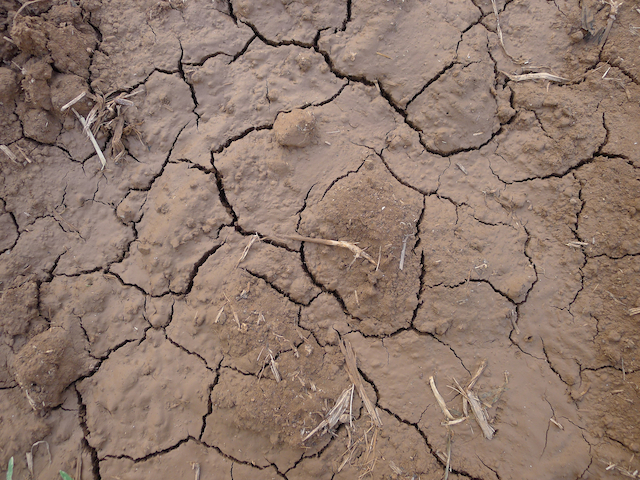
Thirsty soil! When we're initially making drip tape connections into the perpendicular 1.5 inch line, some water spills briefly, and because of the high clay content in our soil coupled with quick evaporation and drying, cracks like these can occur.

September 11, 2016
Fermentation Workshop 9/25 1-3pm
Gia Yaccarino
Fermentation Workshop 9/25 1-3pm
Gia Yaccarino
Fermentation Member Share Workshop Sunday, September 25, 2016 1 – 3 PM
Please join us on Sunday, September 25, 2016 for our Fermenting Workshop. Information regarding fermenting resources, websites and books will be discussed. We invite all members from the fermenting pros to the novices to join us for discussion and education on fermenting basics. This year’s fermenting workshop is meant to be focused on the members - sharing their experiences – triumphs and failures, discussing their concerns about the fermenting process and answering questions. Please join us for what promises to be a very engaging workshop!
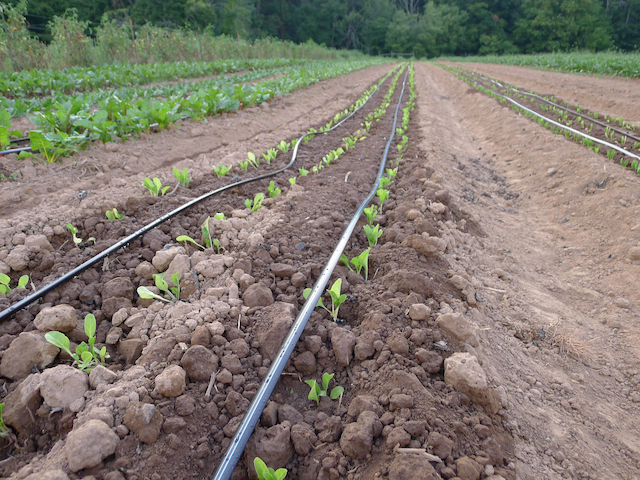
Here, drip tape is saving the lives of our newly transplanted chard and spinach on a 95 degree September day. Because of our new drip tape winder, we're able to reuse most of the drip tape for more than one season.

September 11, 2016
Maple Syrup and Honey For Sale!
Susan Klikus
Maple Syrup and Honey For Sale!
Susan Klikus
Augusta Acres Farm, Susan and Todd Klikus, will be returning to Anchor Run Farm this Thursday September 15th from 1-6 pm to offer for sale their Pure Maple Syrup and their Pure, Local, Raw Honey.
Augusta Acre's maple syrup is produced from sap collected strictly on their farm and boiled down in small batches on their wood fired arch. It is Pure, Dark, Robust syrup.
Their Honey is all extracted from their farm's apiaries. It is an "All Season" honey which features a dark, very sweet flavor. It is Pure, Local and Raw.
Both maple syrup and honey will be available in pint and quart glass jars. Prices this year will be the same for both "Sweets":
Maple syrup: Pint $18 Quart $24
Honey: Pint (20 oz.) $18 Quart (40 oz.) $24
Maple syrup: Pint $18 Quart $24
Honey: Pint (20 oz.) $18 Quart (40 oz.) $24
Recap reusable jar lids will also be available for $6.00.
They will be at Anchor Run from 1:00 - 6:00 PM on Thursday September 15th for tasting and pick up. Susan and Todd accept cash and personal checks made out to Augusta Acres.
Any questions and to pre-order please email Susan at susanklikus@gmail.com
Augusta Acres is a small sustainable farm located near the Delaware River in upstate PA. They practice organic methods, are members of Pennsylvania Association for Sustainable Agriculture, Pennsylvania Maple Producers Assoc., and The NE PA Beekeepers.

September 11, 2016
Workshifts Week of 9/11
By Derek McGeehan
Workshifts Week of 9/11
By Derek McGeehan
Now that we're into the middle of September there is about one month left of workshift opportunities for you to satisfy the work component of your CSA share. If you're not planning to work this season, please remit the balance of your share cost soon. Half shares work 4 hours, full shares work 8 hours, over the course of the entire season. To "buy-out" of your work hours at $15/hour, please send a check payable to "Anchor Run CSA" at 2578 2nd Street Pike, Wrightstown, PA 18940. Please don't feel guilty about this option!
Shifts this week:
Tuesday 8-10am, 10am-12noon
Wednesday 8-10am, 10am-12noon
Friday 8-10am, 10am-12noon
Saturday 10am-12noon
Workshift sign-up instructions may be found here.
Thank you!

September 4, 2016
Veggie Salads
By Linda Dansbury
Veggie Salads
By Linda Dansbury
Due to extreme heat and dry weather, there is a break in lettuce that can be harvested, so if you are a family that loves salads, you may be wondering what to do. Through the year, we eat salads almost every night, but in the summer, I find that the lettuce often gets pushed to the back of the fridge in favor of making vegetable salads. Cucumbers are of course the first, but as I mentioned last week, kale makes delicious salads - such as Kale Caesar Salad. So do carrots and tomatoes - tomatoes are one of, if not my favorite, because the "juice" (read dressing mixed with the tomato juices) at the bottom of the bowl is about the most delicious thing when sopped up with a good loaf of bread. In my family, we peeled the tomatoes, but admittedly when I am in a hurry I just cut them up into slightly larger than bite sized pieces. Add chopped sweet pepper and sliced scallions or onion. Then make a dressing with red wine vinegar, olive oil, a bit of dried oregano, salt, pepper and chopped basil or parsley. Mix up and enjoy. By the way, you can use a drop of balsamic vinegar if you want, but I prefer the lighter red wine vinegar to let the flavors of these delicious tomatoes come through.
I realize that most if not all of your carrots are being eaten out of hand as snacks, but there are 3 delicious salads on this site: Spicy Carrot Salad, Edamame and Carrot Salad with Rice Vinegar, and Lemony Carrot Salad with Dill. Try one or all as a nice change for your dinner table!

September 4, 2016
Veggie Salad Days
By Linda Dansbury
Veggie Salad Days
By Linda Dansbury
As I described in the other article I wrote for this week, I did have a few veggie salads this week. Because they are so flavorful, simply prepared meats go best with them.
Edamame, carrot, scallion and cilantro - made the Edamame and Carrot Salad with Rice Vinegar. I hadn't made this in a few years and it was a nice change!
Tomato, scallion, basil, sweet peppers - made the tomato salad I described in the other article - made it twice
Sweet peppers and onions - used them as the veggies in making kabobs - yum
Swiss chard, onion, cilantro, edamame and hot pepper - made a stir fry using ground pork from Ledamete Grass - what an easy and delicious weeknight meal.
Sweet pepper, onion, edamame - we liked the edamame and corn succutash we had last week so much that I made it again.
If you have something to share with the rest of the membership, please email me at lindadansbury@comcast.net and please put Anchor Run in the subject line so that I can find it.

September 4, 2016
Goodness
By Derek McGeehan
Goodness
By Derek McGeehan
Harvest #17 (Week A) should include winter squash, tomatoes, sweet peppers, garlic, onions, scallions, potatoes, eggplant, okra, hot peppers, kale, swiss chard, chives, and carrots. Some items will be a choice. U-pick should include cherry tomatoes, husk cherries, tomatillos, dill, cilantro, basil, and flowers.
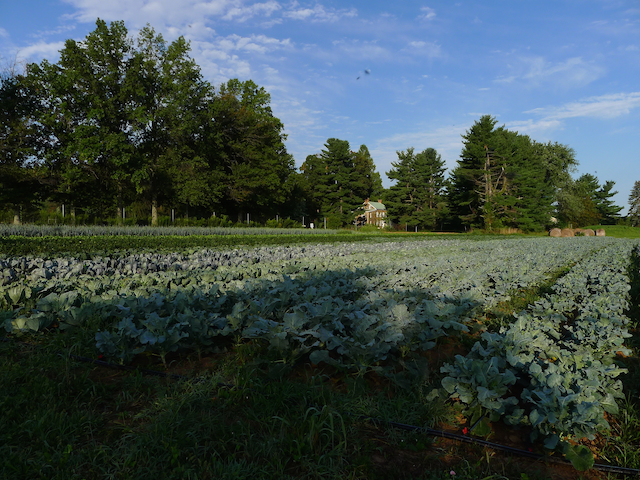
Another view of the freshly weeded and mowed Field 3 where our fall leeks, radishes, turnips, celeriac, cabbage, broccoli, and cauliflower are making their temporary homes.

September 4, 2016
Workshifts Week of 9/4
By Derek McGeehan
Workshifts Week of 9/4
By Derek McGeehan
Half of your committed work hours should be completed soon! Over the course of the season full shares work 8 hours; half shares work 4 hours. If you're unable to contribute the physical portion of your share, you must contribute to the farm financially at the rate of $15/hour. This fills out the balance of your share cost.
Monday Labor Day 9/5 10am-12noon
Tuesday 9/6 8-10am; 10am-12noon
Wednesday 9/7 8-10am; 10am-12noon
Friday 9/9 8-10am; 10am-12noon
Workshift sign-up instructions may be found here.
Thank you!
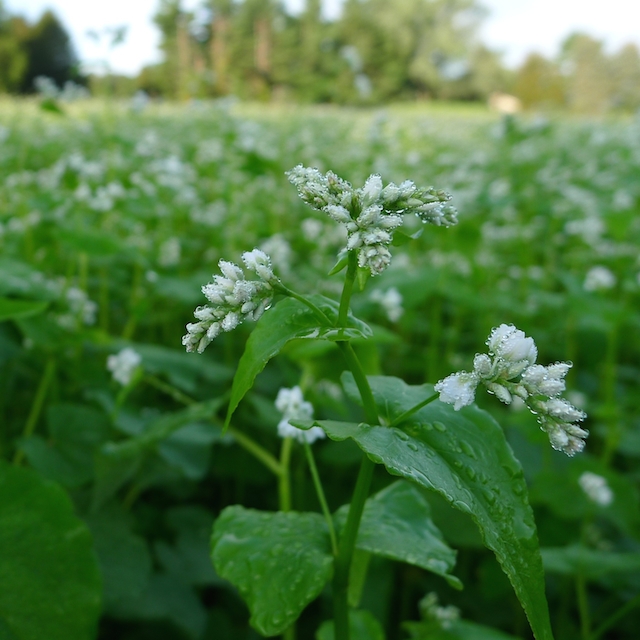
Morning dew on buckwheat that is ready to flower and attract pollinators.

September 4, 2016
Fermentation Workshop 9/25 1-3pm
Gia Yaccarino
Fermentation Workshop 9/25 1-3pm
Gia Yaccarino
Fermentation Member Share Workshop Sunday, September 25, 2016 1 – 3 PM
Please join us on Sunday, September 25, 2016 for our Fermenting Workshop. Information regarding fermenting resources, websites and books will be discussed. We invite all members from the fermenting pros to the novices to join us for discussion and education on fermenting basics. This year’s fermenting workshop is meant to be focused on the members - sharing their experiences – triumphs and failures, discussing their concerns about the fermenting process and answering questions. Please join us for what promises to be a very engaging workshop!
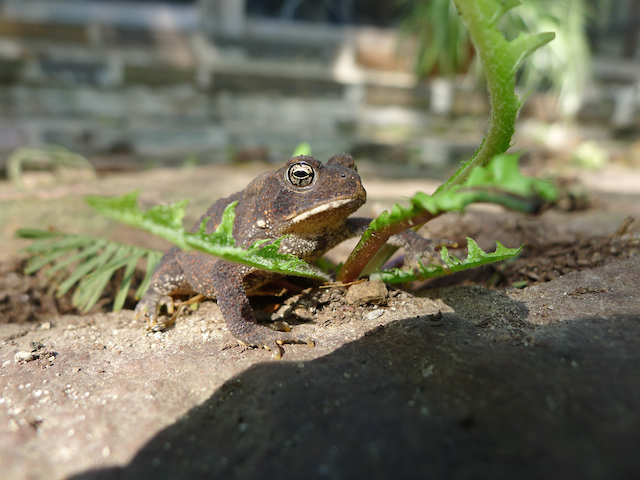
Another toad in the newsletter!

September 4, 2016
Maple Syrup and Honey For Sale!
Susan Klikus
Maple Syrup and Honey For Sale!
Susan Klikus
Augusta Acres Farm, Susan and Todd Klikus, will be returning to Anchor Run Farm on Thursday September 15th to offer for sale their Pure Maple Syrup and their Pure, Local, Raw Honey.
Augusta Acre's maple syrup is produced from sap collected strictly on their farm and boiled down in small batches on their wood fired arch. It is Pure, Dark, Robust syrup.
Their Honey is all extracted from their farm's apiaries. It is an "All Season" honey which features a dark, very sweet flavor. It is Pure, Local and Raw.
Both maple syrup and honey will be available in pint and quart glass jars. Prices this year will be the same for both "Sweets":
Maple syrup: Pint $18 Quart $24
Honey: Pint (20 oz.) $18 Quart (40 oz.) $24
Recap reusable jar lids will also be available for $6.00.
Maple syrup: Pint $18 Quart $24
Honey: Pint (20 oz.) $18 Quart (40 oz.) $24
Recap reusable jar lids will also be available for $6.00.
They will be at Anchor Run from 1:00 - 6:00 PM on Thursday September 15th for tasting and pick up. Susan and Todd accept cash and personal checks made out to Augusta Acres.
Any questions and to pre-order please email Susan at susanklikus@gmail.com
Augusta Acres is a small sustainable farm located near the Delaware River in upstate PA. They practice organic methods, are members of Pennsylvania Association for Sustainable Agriculture, Pennsylvania Maple Producers Assoc., and The NE PA Beekeepers.

September 4, 2016
10 More Weeks of Harvest
By Derek McGeehan
10 More Weeks of Harvest
By Derek McGeehan
September is here and we're beginning harvest week #17 out of 26, so there are 10 more weeks to come to the farm for your Main Season CSA shares. What's after that? Soon we'll announce sign ups for our 6-week Late Fall CSA season which runs mid-November to the end of December as well as our inaugural 8-week Winter CSA season which will run from the beginning of January through the end of February. Details and additional information are forthcoming.
Besides thinking about and planning for late summer, fall, and winter, we're continually busy retrieving storage crops, helping the crops battle weed pressures, and putting fields to rest for the colder seasons. We've now retrieved about 90% of the potatoes and will gather the rest this week. 100% of the #1 grade winter squash are safely in storage. With the help of workshifts all of the fall cabbage, broccoli, cauliflower, leeks, and celeriac were successfully weeded and look healthy. Next up for weeding are beets, chard, kale, and asparagus. Fields of spring peas, summer beans, edamame, lettuce, and herbs, as well as potatoes, have been transitioned to a cover crop mix of oats, buckwheat, daikon, and clover to scavenge nutrients and protect the soil over the winter. Each time there is an anticipated rain event we make an effort to establish a cover crop wherever is available. The lack of rain this past month has been a challenge but amazingly it has been enough to initiate germination and enable the plants to grow.
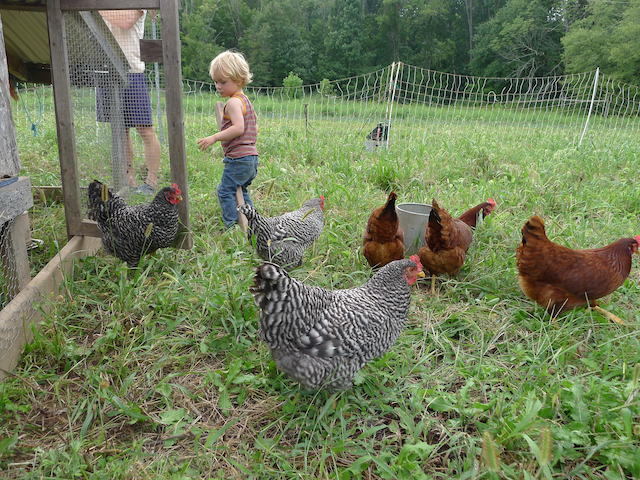
This past Saturday we moved our pastured laying hen flock to a new 4-week location. I'm installing crisscrossing wire over the area to deter hawks while the electrified netting theoretically fends off foxes, raccoons, skunks, dogs, and weasels.

POSTS BY TYPE
POSTS BY MONTH
